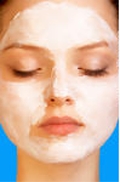
In zootomy and dermatology, skin is an organ of the integumentary system composed of a layer of tissues that protect underlying muscles and organs. As the interface with the surroundings, it plays the most important role in protecting against pathogens. Its other main functions are insulation and temperature regulation, sensation and vitamin D and B synthesis. Skin is composed of the epidermis and the dermis. Below these layers lies the hypodermis(subcutaneous adipose layer), which is not usually classified as a layer of skin. The outermost epidermis is consists of stratified squamous epithelium with an underlying basement membrane. It contains no blood vessels, and is nourished by diffusion from the dermis. The main type of cells which make up the epidermis are keratinocytes, with melanocytes and Langerhans cells also present. The epidermis can be further subdivided into the following strata (beginning with the outermost layer): corneum, lucidum, granulosum, spinosum, basale. Cells are formed through mitosis at the innermost layers. They move up the strata changing shape and composition as they differentiate, inducing expression of new types of keratin genes. They eventually reach the corneum and become sloughed off (desquamation). This process is called keratinization and takes place within about 30 days. This layer of skin is responsible for keeping water in the body and keeping other harmful chemicals and pathogens out. Blood capillaries are found beneath the epidermis, and are linked to an arteriole and a venule. Arterial shunt vessels may bypass the network in ears, the nose and fingertips. The dermis lies below the epidermis and contains a number of structures including blood vessels, nerves, hair follicles, smooth muscle, glands and lymphatic tissue. It consists of loose connective tissue otherwise called areolar connective tissue - collagen, elastin and reticular fibres are present. Erector muscles, attached between the hair papilla and epidermis, can contract, resulting in the hair fibre pulled upright and consequentially goose bumps. Skin can be dividided into thick and thin types. Thick skin is present on the soles of the feet and the palms of the hands. It has a larger stratum corneum with a higher keratin content. Thick skin does not grow hair; its purpose is to help grip. Thin skin is present on the bulk of the body and has a smaller stratum corneum and fewer papillae ridges. It has hair and is softer and more elastic. The characteristics of the skin, including sensory nerve density and the type of hair, vary with location on the body. The skin must be regularly cleaned. Unless enough care is taken it will become cracked or inflamed. Unclean skin favors the development of pathogenic organisms. Functions of the skin are disturbed when it is dirty and it becomes more easily damaged. The release of antibacterial compounds decreases. Dirty skin is more prone to develop infections. Cosmetics should be used carefully because these may cause allergic reactions. Each season requires suitable clothing in order to facilitate the evaporation of the sweat. Sunlight, water and air play an important role in keeping the skin healthy.
In fact, skin care and protection should be an essential part of your health, fitness, and beauty regime. If you take care of your skin, your skin will take care of you! If your stuck in a skin care rut, or if you are just looking to learn a bit more about the basics of skin care, read on to learn more about this important step in your daily activities. You are never too young or too old to start taking care of your skin. In fact, skin care and protection should be an essential part of your health, fitness, and beauty regime. Exercise, rest, and good nutrition lay the foundation for beautiful, healthy skin, inside and out. A proper diet is not only good for your overall health, it also helps to ensure that your skin will receive all of the vitamins, minerals, and nutrients that it needs to maintain and repair cells. Drinking purified water is another good way to keep your skin healthy. Water helps to hydrate the skin and move waste and nutrients through the system. It is very effective mixing a teaspoon or capful of Organic Apple Cider Vinegar in with your water. Do not drink Tap Water. Dry skin is very common, especially with age. Older skin has fewer sweat and oil glands than younger skin. Dry skin may be caused by frequent baths, certain cosmetics or medications. But whatever the cause, there are ways to alleviate the itchiness associated with it. Avoid using harsh soaps when bathing, and if possible, cut back on the number of baths or showers each week. A sponge bath with warm water may help to clean and revive skin without stripping the skin of its valuable moisturizers. When you do use soap, try using a natural very mild soap that does not contain any dyes, parabens or perfumes. Follow up the bath with a moisturizing lotion, concentrating on problem dry areas. A good all natural moisturizer is one of the foundations for a healthy skin care regimen. Continue moisturizing throughout the day to keep skin healthy. Your hands and face are particularly susceptible to daily damage, and may need to be moisturized several times. Apart from the services offered at skin clinics, many creams, gels and ointments that claim to treat acne, diminish sun or age spots and enhance skin elasticity are widely available in the market. There are scrubs, cleansers, masks, over-the-counter skin medicine and skin peel formulations, all offered at various price ranges. Most can be bought at department stores or drugstores, but the fact is that very few of these so- called miracle products actually work. Over the years, beauty experts and skin doctors have come up with a vast array products to treat and minimize wrinkles. Anti-wrinkle creams and ointments help reduce the appearance of wrinkles and prevent new ones from forming. These wrinkle ointments and anti-aging creams help a lot in restoring the skin's firmness and elasticity. In addition, these products contain anti-oxidants and retinol that not only aids in reducing wrinkles and fine lines on the skin, but also stimulates collagen production. The important thing to remember when seeking out treatment for your wrinkles is to know first how your body can possibly react to the treatment. Get in touch with a skin doctor for things that you are not sure of, but are contemplating on trying out. There are a lot of skin care products in the market today. Unlike before when a normal bar of soap was used for skin cleansing, cosmetic companies are now producing a wide variety of skin care treatments that can address various skin concerns. However, there are cases when treatments need to be more aggressive, especially for those who have aging or blemished skin. Most, if not all, of the over-the-counter products are topical in nature, meaning it only affects the epidermis or the outer layer of the skin. Aging or blemished skin needs to be treated down to the root of the problem to see definite changes.

Terms and definitions on this pageAcne
- An inflammatory disease of the sebaceous glands and hair follicles of the skin that is marked by the eruption of pimples or pustules, especially on the face.
Bacteria
- Microscopic unicellular prokaryotic organisms characterized by the lack of a membrane-bound nucleus and membrane-bound organelles.
Dermis
- The sensitive connective tissue layer of the skin located below the epidermis, containing nerve endings, sweat and sebaceous glands, and blood and lymph vessels.
Epidermis
- The outer, protective, nonvascular layer of the skin of vertebrates, covering the dermis.
Hypodermis
- A subcutaneous layer of loose connective tissue containing a varying number of fat cells.
Pimples
- A small swelling of the skin, usually caused by acne; a papule or pustule.
Ultraviolet radiation
- Invisible electromagnetic radiation between visible violet light and X rays.
|